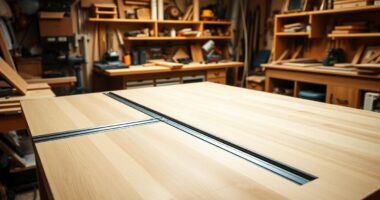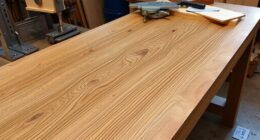Did you know that nearly 70% of all woodworking projects rely on the proper choice of cutting tools? When it comes to selecting the right miter saw, the choice between a 10 inch miter saw and a 12 inch miter saw can significantly impact your woodworking experience. Whether you’re a hobbyist or a seasoned pro, understanding the nuances of blade sizes is essential for achieving precision and efficiency in your work. With woodworking’s surge in popularity, having clarity on what size saw suits your needs can make all the difference in your projects.
In this article, we’ll dive into a comprehensive miter saw comparison, emphasizing the unique traits of each model. You’re here to discover which miter saw—10 inch or 12 inch—aligns best with your woodworking tools and projects. Let’s get started!
Key Takeaways
- The choice of miter saw affects the quality of your cuts and overall efficiency.
- A 10 inch miter saw is typically more portable and often more affordable.
- A 12 inch miter saw offers greater cutting capacity for larger projects.
- Understanding blade sizes is crucial for effective woodworking.
- Both saws have distinct pros and cons to consider based on project needs.
Introduction to Miter Saws
Miter saws are essential tools in the world of woodworking. Their design allows for precise angled cuts, which are invaluable for various projects. Understanding miter saw features can significantly enhance your crafting abilities. Whether you are working on crown molding, building furniture, or tackling general woodworking basics, a miter saw becomes your best ally.
The versatility of miter saw uses is worth noting. These saws can handle a range of materials, making them suitable for both complex and straightforward tasks. With the ability to create clean and accurate cuts, your projects will not only turn out better but can also save you time during the process. Mastering the use of a miter saw opens doors to countless opportunities in woodworking.
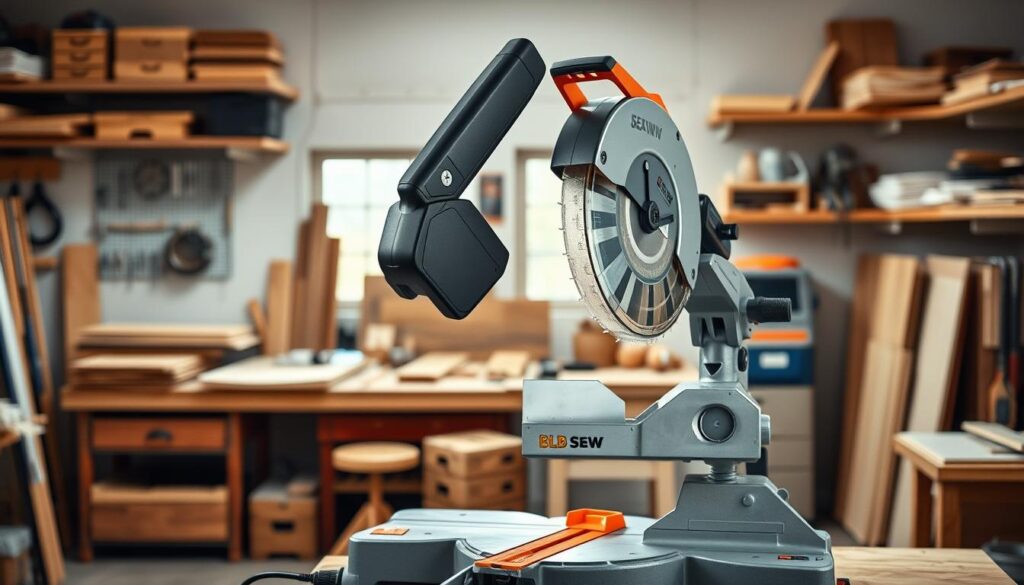
Understanding Blade Sizes in Miter Saws
Selecting the right miter saw blade sizes is crucial for achieving precise cuts. A 10-inch miter saw benefits users by delivering high levels of accuracy, ideal for intricate work and smaller projects. On the other hand, a 12-inch miter saw benefits those who require more significant cutting capabilities, making it an excellent choice for larger pieces of wood.
When considering which blade size suits your needs, think about the types of materials you typically work with and the specific dimensions of your cuts. A 10-inch blade can be perfect for detailed work, while projects that demand wider cuts may necessitate a 12-inch blade.
Your ultimate choice in miter saw blade sizes will determine how efficiently and effectively you can complete your woodworking tasks. Understanding these differences ensures you select the right tool for the job, optimizing both your performance and the quality of your workmanship.

Key Features of a 10-Inch Miter Saw
A 10-inch miter saw presents a range of features that can greatly benefit hobbyists and professionals alike. These tools balance power and precision, making them suitable for various applications. As you consider your options, understanding the 10 inch miter saw features can help you make an informed decision.
Pros of a 10-Inch Miter Saw
- Cost-effective: Generally more affordable than their 12-inch counterparts, allowing you to save money.
- Portable: Lighter and easier to transport, which is great for job sites or small workshops.
- Precision: Offers high accuracy for detailed cuts, making it suitable for trim work and similar tasks.
- Versatile: Well-suited for most woodworking projects without the need for larger, heavier tools.
Cons of a 10-Inch Miter Saw
- Limited cutting capacity: Less capable of handling larger boards or thicker materials.
- Less power: May not perform as efficiently in heavy-duty applications compared to a 12-inch miter saw.
- Adjustments: Some models may require more frequent calibration to maintain cutting accuracy.
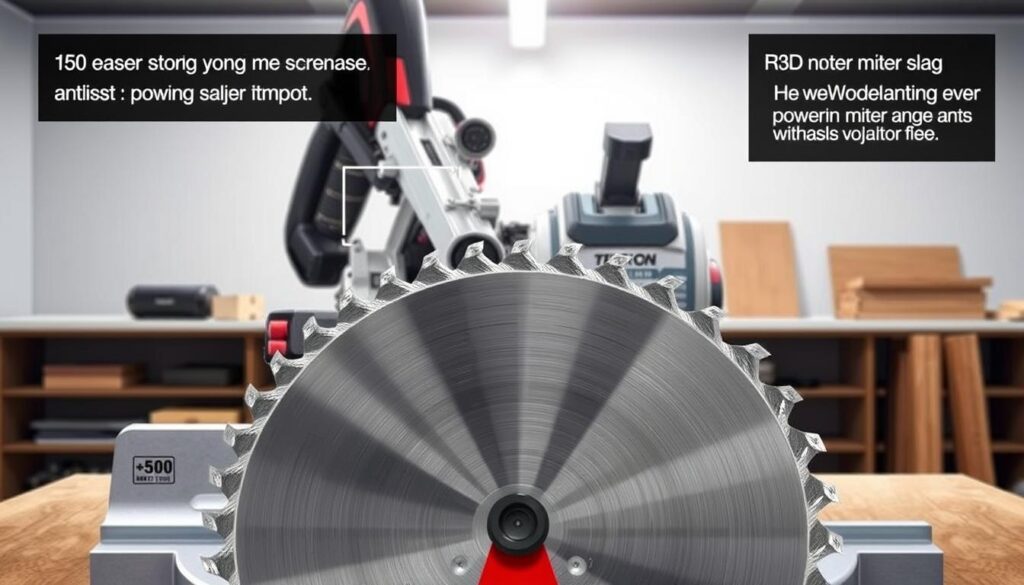
Key Features of a 12-Inch Miter Saw
When considering a 12-inch miter saw, it’s essential to understand its unique features, advantages, and disadvantages. This type of saw is designed to handle larger projects and thicker materials, making it a popular choice for serious woodworkers and contractors.
Pros of a 12-Inch Miter Saw
A significant advantage of a 12-inch miter saw is its enhanced cutting capacity. This allows you to cut wider and thicker boards with ease. The increased blade size contributes to improved accuracy and offers better versatility for a wide range of woodworking tasks. Here are some pros to consider:
- Higher cutting capacity for diverse materials.
- Greater precision in complex cuts with the larger blade.
- Ability to handle larger crown moldings and wider materials.
- Advanced features often included, such as laser guides and digital displays.
Cons of a 12-Inch Miter Saw
While there are notable benefits, knowing the pros and cons of a 12-inch miter saw is crucial for making an informed decision. Some disadvantages may include:
- Increased weight, making it less portable.
- Higher costs compared to smaller saws.
- Requires more space in your workshop or job site.
- Potentially overkill for smaller projects.

Understanding these pros and cons of a 12 inch miter saw can help you assess whether this tool fits your woodworking needs.
Main Differences Between 10 inch vs 12 inch Miter Saw Comparison
When choosing between a 10-inch and a 12-inch miter saw, it’s essential to understand the 10 inch vs 12 inch miter saw differences. Each size has unique advantages that can significantly impact your projects. A thorough examination of factors like cutting capacity, motor power, weight, and cost will help you make an informed decision.
The following miter saw comparison chart highlights the key distinctions between the two sizes, providing a quick reference for your needs:
| Feature | 10-Inch Miter Saw | 12-Inch Miter Saw |
|---|---|---|
| Cutting Capacity | Up to 6 inches for vertical cuts | Up to 7.5 inches for vertical cuts |
| Weight | Approximately 30-40 lbs | Approximately 50-60 lbs |
| Motor Power | 12-15 amps | 15-16 amps |
| Typical Price Range | $150 – $300 | $400 – $700 |

In summary, understanding these main differences allows you to assess which miter saw aligns best with your cutting needs and budget. Take these factors into account, and you’ll find the perfect tool for your woodworking projects.
Cutting Capacity of 10-Inch vs 12-Inch Saws
Understanding the cutting capacity of miter saws is essential for any woodworker looking to choose the right tool for their projects. The differences between a 10-inch and a 12-inch miter saw can significantly impact your work, especially in terms of depth and width performance. By assessing these capabilities, you can ensure you select a saw that meets your specific cutting needs.
Depth and Width Performance
The cutting capacity of each saw size reveals notable differences. A 10-inch miter saw typically offers a cutting capacity of approximately 6 inches in width and 4 inches in height. This size is perfect for smaller projects, providing adequate space for standard materials. Conversely, the 12-inch miter saw boasts a cutting capacity of up to 8 inches in width and 6 inches in height, making it suitable for larger pieces of wood or more complex cuts. This superior depth and width performance means you can tackle more substantial tasks with ease, expanding your project possibilities.
Thickness and Accuracy of Cuts
When it comes to the accuracy of cuts, both saw sizes have their merits. The 10-inch saw, while having a smaller cutting capacity, often excels in precision for smaller cuts. Its lightweight and compact design can lead to enhanced control, ideal for intricate work. On the other hand, the 12-inch saw provides the ability to handle thicker materials, making it a better choice for jobs that require a larger blade. The enhanced cutting capacity of the 12-inch saw generally allows for more effective and accurate cuts, particularly in demanding applications. Thus, considering both the thickness of your materials and the accuracy of cuts is vital in choosing between these two options.

Motor Specs: AMPs & RPM for Both Sizes
When selecting a miter saw, understanding the motor specs plays a crucial role in determining its performance. Both the 10-inch and 12-inch miter saws typically operate with a powerful 15 amp motor. Despite having the same amperage, the revolutions per minute (RPM) differ significantly between these two sizes. The motor specs indicate that the 10-inch saws can reach an impressive peak of 5000 RPM, while the 12-inch models max out at 4000 RPM. This disparity can affect how each saw handles various materials and contributes to overall efficiency.
Understanding Power and Speed Differences
The saw power differences between the two sizes highlight key performance indicators that can influence your buying decision. You may find the 10-inch saw more adept at tackling finer cuts at a faster pace due to its higher RPM. Conversely, the 12-inch saw, while slightly slower, provides a stable cutting experience ideal for larger materials. By paying attention to the amps and RPM, you can make an informed choice based on the specific tasks you plan to accomplish with your miter saw.
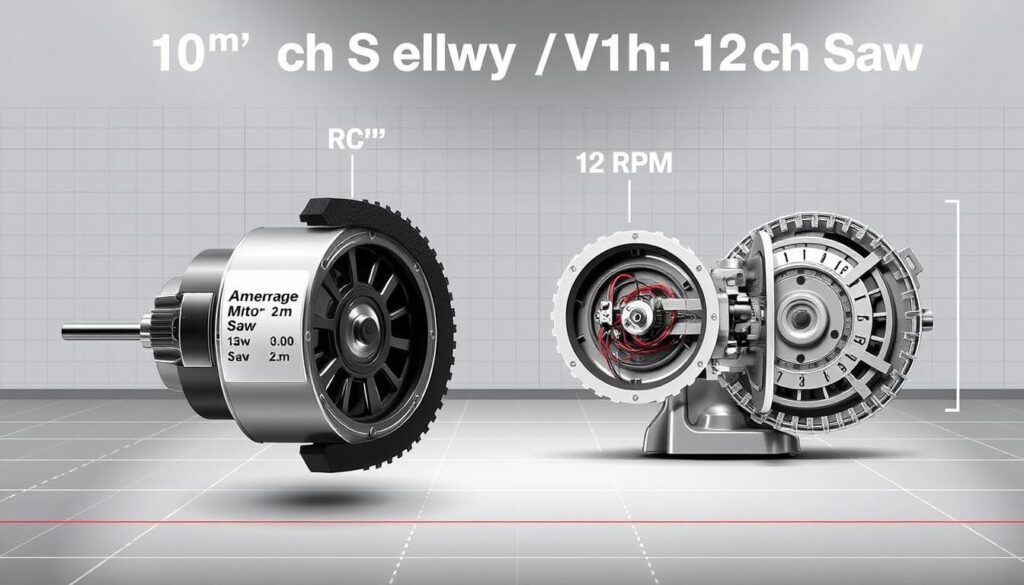
Blade Deflection and Its Impact on Performance
Blade deflection refers to the tendency of the saw blade to wobble during operation. This phenomenon becomes particularly significant in larger saws, such as the 12-inch miter saw. While both 10-inch and 12-inch saws experience some degree of blade deflection, the larger diameter of a 12-inch blade may present more challenges in maintaining saw accuracy during precision cutting tasks.
When engaging in detail-oriented projects, you might notice that blade deflection can have a considerable impact on performance. A poorly adjusted or worn blade may lead to inaccuracies that affect the quality of your cuts. Selecting high-quality blades specifically designed to reduce deflection is essential. Such blades can significantly enhance your saw’s performance, ensuring that it delivers consistent results regardless of size.

Understanding the relationship between blade deflection and saw accuracy can help you make informed decisions when selecting a miter saw. For those who prioritize precision in their work, investing in a robust blade capable of minimizing deflection is highly beneficial. The overall performance of the saw will improve, providing cleaner cuts that meet your project’s specifications.
Portability and Storage Considerations
When evaluating miter saws, saw portability plays a crucial role, especially for users who frequently transport their tools to various job sites. A 10-inch miter saw typically weighs less and offers an easier means of moving from one location to another. Many professionals favor these smaller models for their lightweight design, which enhances mobility and convenience.
In contrast, a 12-inch miter saw generally has a more substantial build, making it bulkier. Despite this, some models come with integrated stands or wheels that significantly improve mobility. Understanding your specific needs is vital before selection. Individuals who often find themselves moving miter saws will benefit from considering the overall weight and design of the machine.
Storage considerations are also essential. A 10-inch saw can fit in tighter spaces, making it favorable for home workshops with limited storage options. For those with more space, a 12-inch saw’s benefits might outweigh its size, providing greater cutting capacity while still being manageable. Balancing your requirements for portability and storage can lead to improved efficiency in your woodworking projects.
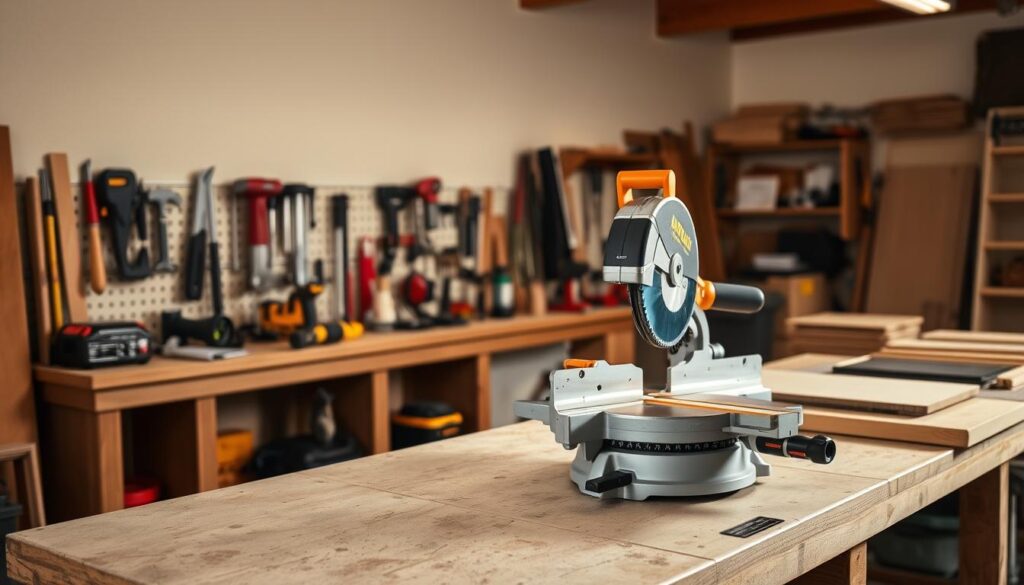
Cost and Affordability of Miter Saws
When considering your miter saw options, cost comparison becomes essential. You will find that 10-inch miter saws tend to be more budget-friendly than their 12-inch counterparts. Thus, understanding the differences in initial investment versus long-term costs is crucial for making a sound choice.
Initial Investment vs Long-term Costs
A 10-inch miter saw usually comes with a lower price tag, making it an accessible option for beginners and casual DIY enthusiasts. On the other hand, investing in a 12-inch miter saw can set you back approximately 30% more. This higher upfront cost often stems from the saw’s ability to handle larger projects effectively.
While evaluating your miter saw investment, consider the long-term affordability of each option. A 12-inch saw’s enhanced cutting capacity can lead to improved efficiency and productivity in your woodworking projects. Ultimately, a larger investment may prove beneficial in the long run if you frequently tackle extensive tasks.
A careful cost comparison between these two sizes can illuminate the best choice for your specific needs. Ensuring that you weigh upfront costs against potential future savings will guide you toward a miter saw that suits both your budget and your woodworking ambitions.

Conclusion
As we wrap up this detailed miter saw comparison, it’s essential to consider your specific needs and preferences when making a woodworking decision. The choice between a 10-inch and a 12-inch miter saw can greatly influence the success of your projects, from small crafts to larger constructions.
With the advantages of portability and cost-effectiveness, the 10-inch saw is ideal for lighter tasks, whereas the 12-inch option offers enhanced cutting capacity and precision for more demanding work. Your best miter saw ultimately depends on the scale of projects you wish to tackle, your available budget, and, not least, your own comfort with the equipment.
In summary, understanding what each size brings to the table is crucial in making a knowledgeable miter saw conclusion. By aligning your choice with your woodworking aspirations, you can ensure that the tool you select will not only meet your needs but also enhance your skills and creativity in the long run.





